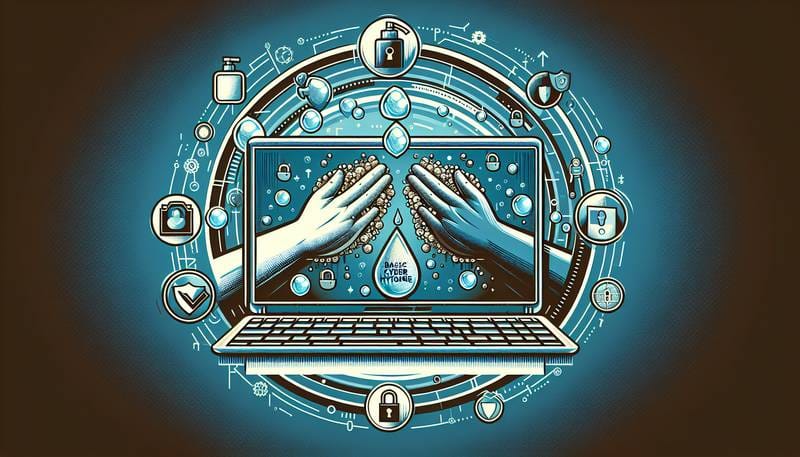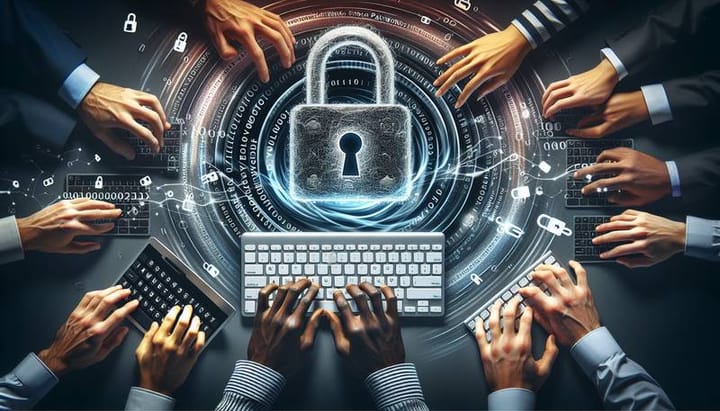Basic Cyber Hygiene: Protecting Your Digital Life

Introduction
Welcome to the realm of cyberspace, a place where data travels in the blink of an eye, and our digital footprints scatter across the internet. It's almost like living in a parallel universe where our social interactions, shopping habits, and even our personal identities exist in a virtual dimension. However, with this convenience comes a lurking danger: the constant threat of cyber attacks. Every click, every share, and every online transaction can expose us to potential risks if we don't practice basic cyber hygiene. So, just like we maintain cleanliness to stay healthy in the physical world, it's essential to adopt certain habits to protect our digital life. This guide provides an informative, yet entertaining roadmap to bolster your cyber defenses and secure your presence in the digital landscape. Get ready to empower yourself and take control of your online security!
Understanding Cyber Threats
Cyber threats are like the common cold of the digital world—ubiquitous and persistent. They come in many forms and can range from mildly annoying to devastatingly destructive. Viruses, much like their biological counterparts, can spread from one device to another, corrupting files and systems in their wake. Malware, short for malicious software, can lurk unseen in the background, stealing sensitive information or turning your device into a zombie in a botnet army. Phishing attacks cleverly disguise themselves as legitimate communications, luring unsuspecting victims into handing over their personal details. Ransomware holds your data hostage, demanding payment for its release. Identity theft can drain your bank accounts and tarnish your reputation by using your credentials without your consent. Understanding these threats is like knowing the enemy, and it’s the first step toward building a fortress around your digital life.
Creating Strong Passwords
A strong password is like the mysterious gatekeeper of your online accounts, warding off intruders and keeping your digital treasures safely locked away. In a world where "123456" and "password" are still all too common, taking the time to craft a complex password is crucial. Aim for a minimum of 12 characters, blending upper and lowercase letters, numbers, and symbols into an unpredictable sequence. Avoid using easily guessable information like birthdays or pet names. Instead, think of a passphrase—a series of random words or a sentence that only makes sense to you. To add an extra layer of security, enable multi-factor authentication wherever possible. This requires not just your password but also another piece of evidence—something you have, such as a smartphone for receiving a one-time code. Managing multiple strong passwords can be a headache, but that's where password managers come into play. These digital vaults store your login credentials and help generate new ones, so you only need to remember one master password. Far from the days of writing passwords on sticky notes, embracing a password manager could be the game-changer in your cyber hygiene routine.
Securing Your Home Network
Your home network is like the central hub of your digital abode, connecting your devices and allowing them to communicate with the wider world. Yet an unsecured network is like an open door, inviting cybercriminals to snoop around or exploit your connection. Securing your Wi-Fi network starts with changing the default username and password of your router. These defaults are often well-known and provide an easy target for attackers. Instead, set a strong, unique password for your router. Additionally, enable the network encryption—WPA3 is the most secure currently available. Disabling WPS (Wi-Fi Protected Setup) and setting up a guest network for visitors can also help isolate potential vulnerabilities. If your router offers it, activating a firewall can further guard against incoming threats. And for those times when you’re out and about, using a Virtual Private Network (VPN) can protect your online activities from prying eyes by encrypting your internet traffic. Think of it as sending your data through a secure tunnel that no one else can access. By taking these steps, you can turn your home network into a digital fortress, repelling unwanted virtual invaders.
Recognizing Phishing Attempts
Phishing is the digital equivalent of a con artist trying to swindle you out of your personal information. These cunning scams masquerade as legitimate emails, text messages, or websites to lure you into revealing passwords, credit card numbers, or other sensitive data. The bait often comes in the form of an urgent request, a threat of account closure, or even a too-good-to-be-true offer. To defend against phishing, you must develop a keen eye. Always check the sender's email address for any oddities—legitimate companies won't use a public email service. Be wary of unsolicited attachments or links, as these can harbor malware. Look for telltale signs of phishing, like poor spelling, grammar mistakes, or generic greetings that don't use your name. If an offer seems too enticing, it’s likely a scam. When in doubt, contact the company directly through a trusted channel to verify the communication. Phishing awareness is an essential piece of the cyber hygiene puzzle, keeping you one step ahead of the swindlers seeking to pilfer your personal data.
... (continued)
Keeping Software and Systems Updated
Imagine cyber security as an endless race between software developers and cybercriminals. Each security update or patch a developer releases is like a hurdle for potential attackers. To keep your lead in this race, it's vital to maintain updated software and systems. Updates are not just shiny new features—they are fortifications against the vulnerabilities that attackers exploit. Ignoring software updates is akin to leaving your digital door ajar, inviting cyber thieves to take a peek inside. Operating systems, antivirus software, and all applications should be kept on the latest versions. Most software offers automatic updates, and enabling them can ensure you're always protected without having to lift a finger. Think of updates as reinforcements to the walls of your digital castle, ensuring they remain impenetrable against the advancing threats.
Backing Up Your Data
Backing up your data is the digital equivalent of an insurance policy for your personal files. In the event of a cyber attack such as ransomware, or even common mishaps like hardware failure, a data backup can be your saving grace. The rule of thumb is the 3-2-1 backup strategy: keep three copies of your data on two different media, with one copy stored offsite. This could mean having your files on your computer, an external hard drive, and a cloud storage service. Modern cloud services offer automatic syncing, making the backup process seamless and convenient. Ensuring your backup is encrypted adds an extra layer of security, safeguarding your data from unauthorized eyes. Treat your backups as you would a treasure chest on a pirate ship—hidden and secure, always ready for retrieval should the need arise.
Staying Vigilant with Updates and News
In the fast-paced world of technology, staying informed is staying safe. Cyber threats are continually evolving, and what was secure yesterday may not be tomorrow. Follow technology news outlets, subscribe to security blogs, or set up alerts for updates on cyber security threats. This proactive approach allows you to react swiftly to emerging threats and adapt your cyber defense strategies accordingly. Consider joining community forums or attending webinars to stay connected with like-minded individuals who are also navigating the challenges of cyber security. Knowledge is power, especially when it comes to protecting your digital life. Be ever vigilant, ready to learn, and quick to act—your cyber well-being depends on it.
Conclusion: Making Cyber Hygiene a Habit
In conclusion, practicing basic cyber hygiene is essential in our connected world. Like brushing your teeth or washing your hands, it's a set of habits you should integrate into your daily routine. Protecting your digital life is an ongoing commitment that requires awareness, vigilance, and proactive measures. It's about creating strong passwords that act as unbreakable locks, securing your home network as firmly as you bolt your doors, recognizing the deceitful baits of phishing scams, keeping your software up-to-date like a well-tended shield, and backing up your data as if safeguarding your very own digital DNA. As you navigate the vast internet, remember that your cyber security is as much a personal responsibility as it is a technological one. Embrace these practices, stay informed, and you’ll not only protect your digital life but also enhance your digital savvy. Now, equipped with knowledge and a robust set of tools, step boldly into the digital age with confidence and command. Your cyber journey awaits!


